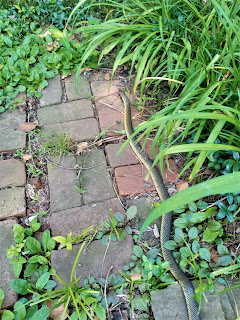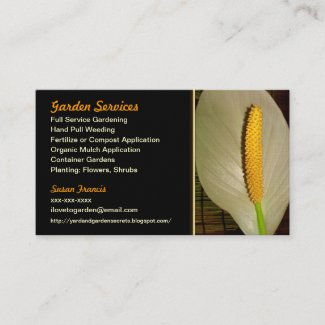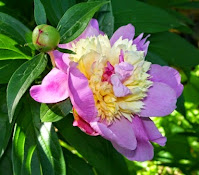The Stella d Oro with its golden yellow flowers will bloom all from June to August. Plant this 18 to 24-inch high lily in a container or along a garden border. This lily is a great ground cover and looks good grown in a rock garden. Stella de Oro lilies are easy to grow provided that you grow them in full sun and well-drained soil.
I grow Stella de Oro lilies in a garden bed that is close to my patio table. The flowers always look cheerful and certainly brighten the garden.
I grow Stella de Oro lilies in a garden bed that is close to my patio table. The flowers always look cheerful and certainly brighten the garden.
The foliage of this lily grows out of a compact clump. The leaves are long and narrow with a bend and point at the tip. The dark green leaves are an attractive background for the vibrant yellow flowers. When fully grown the daylilies will be two feet high with a similar spread. Plant this prolific bloomer in containers, along a walkway or in a feature garden, or anywhere that you desire the cheerful golden-yellow color.
I grow Stella de’Oro lilies along my back slope, I like the attractive green foliage and the yellow flowers look beautiful when grown in masses.
Plant the lilies in the spring after the danger of frost has passed. This particular lily is not fussy about the soil or the PH however if you mix your soil with compost or manure the plants are strong and the flowers are vibrant.
Choose a garden site that has six hours of sun with well-drained soil. If your summers are extremely hot with temperatures well into the upper nineties, then select a garden site where the lilies will have part sun in the heat of the day.
Choose a garden site that has six hours of sun with well-drained soil. If your summers are extremely hot with temperatures well into the upper nineties, then select a garden site where the lilies will have part sun in the heat of the day.
Dig a hole that is the same depth as the nursery container.
Gently shake off some dirt from the root and then set the lily clump in the center of the hole, spread the roots so that they face outward.
Fill the hole with soil and water well. For bare root planting, you would hydrate your bare root for thirty minutes before you plant. Do this by filling a bowl with tepid water and setting the barefoot in the bowl. Plant the bare root so that the top of the root is one inch below the soil.
Care for your flowers by watering them in the morning with drip irrigation.
When you view new growth, apply two inches of mulch around the lilies. Fertilize with miracle grow




















